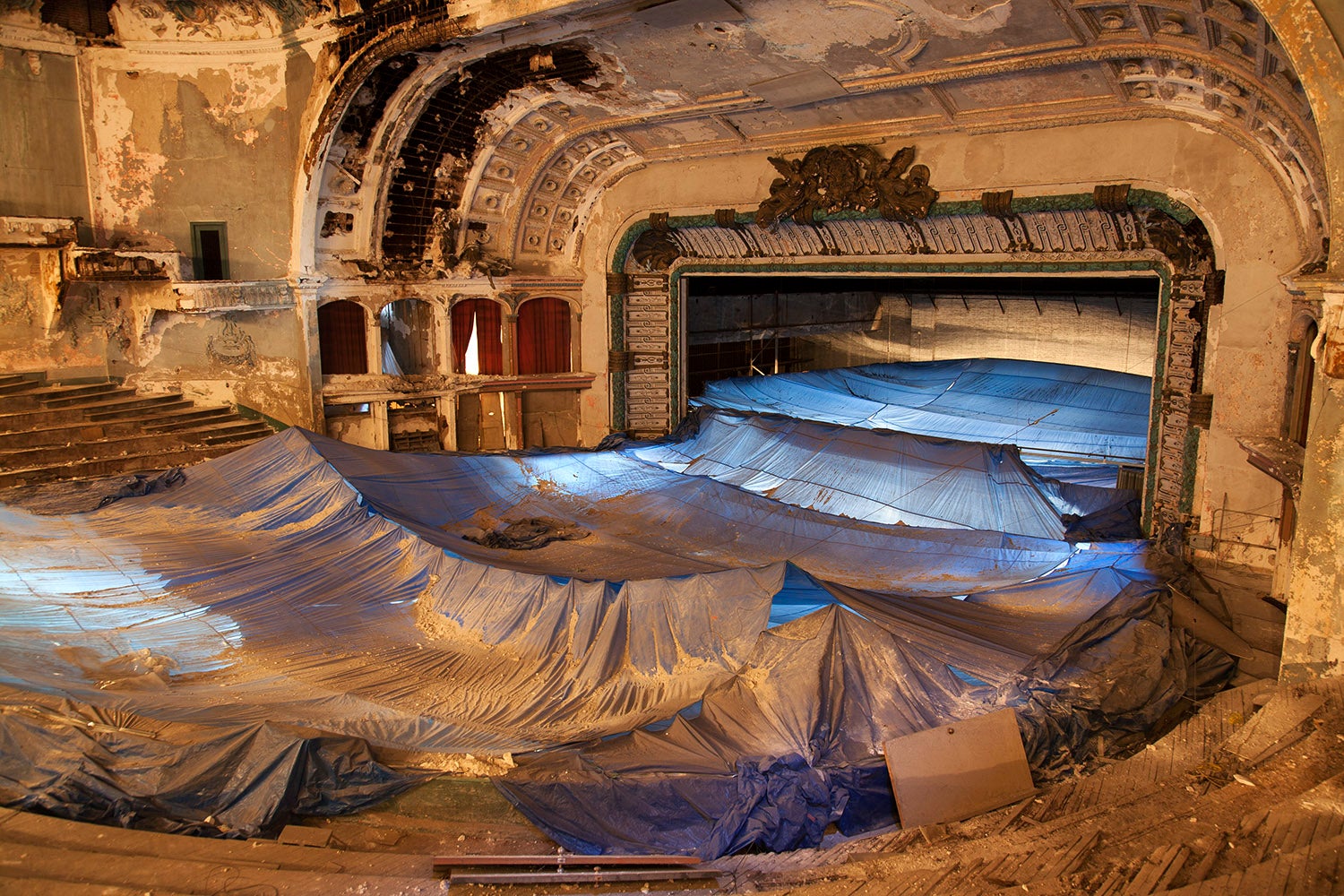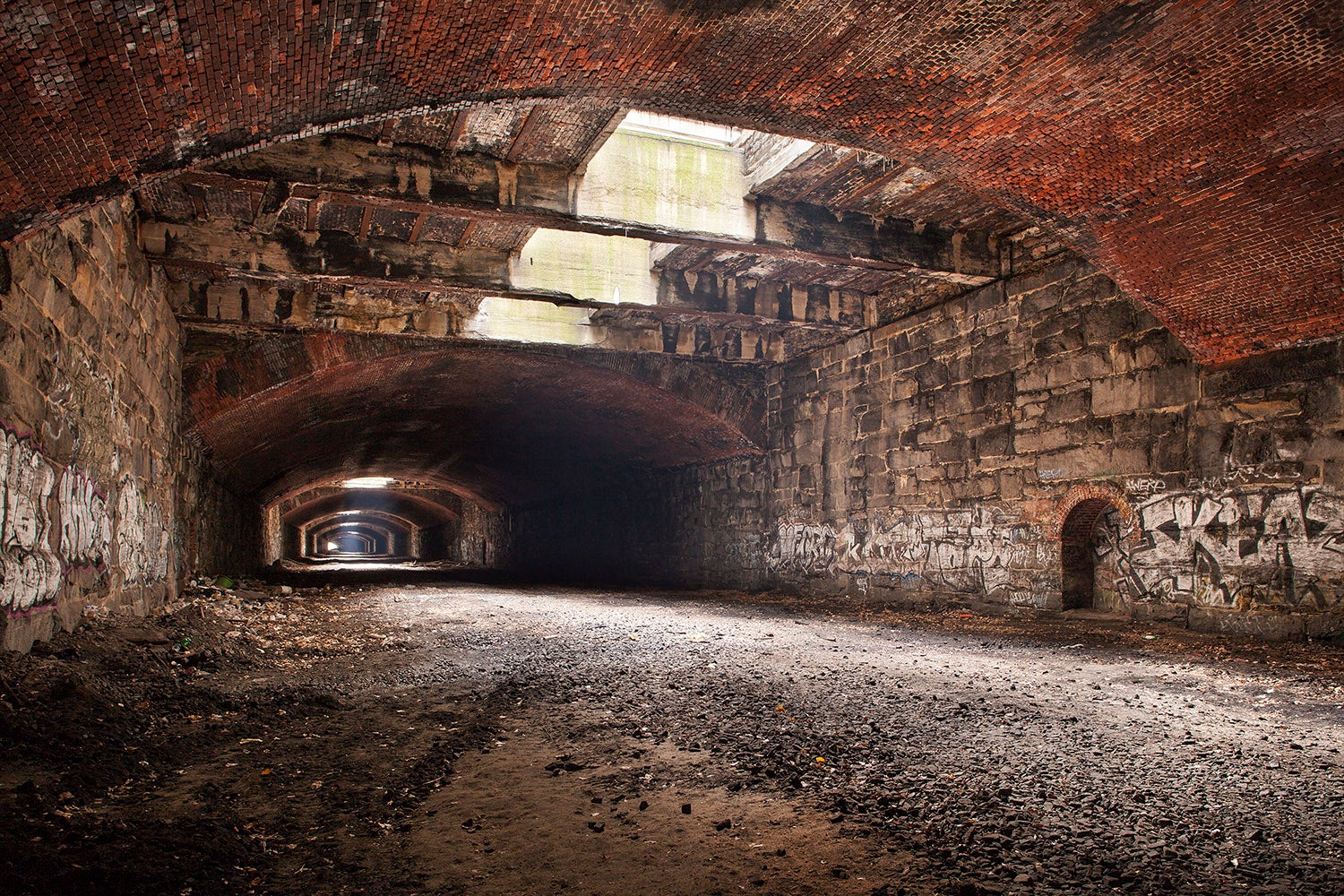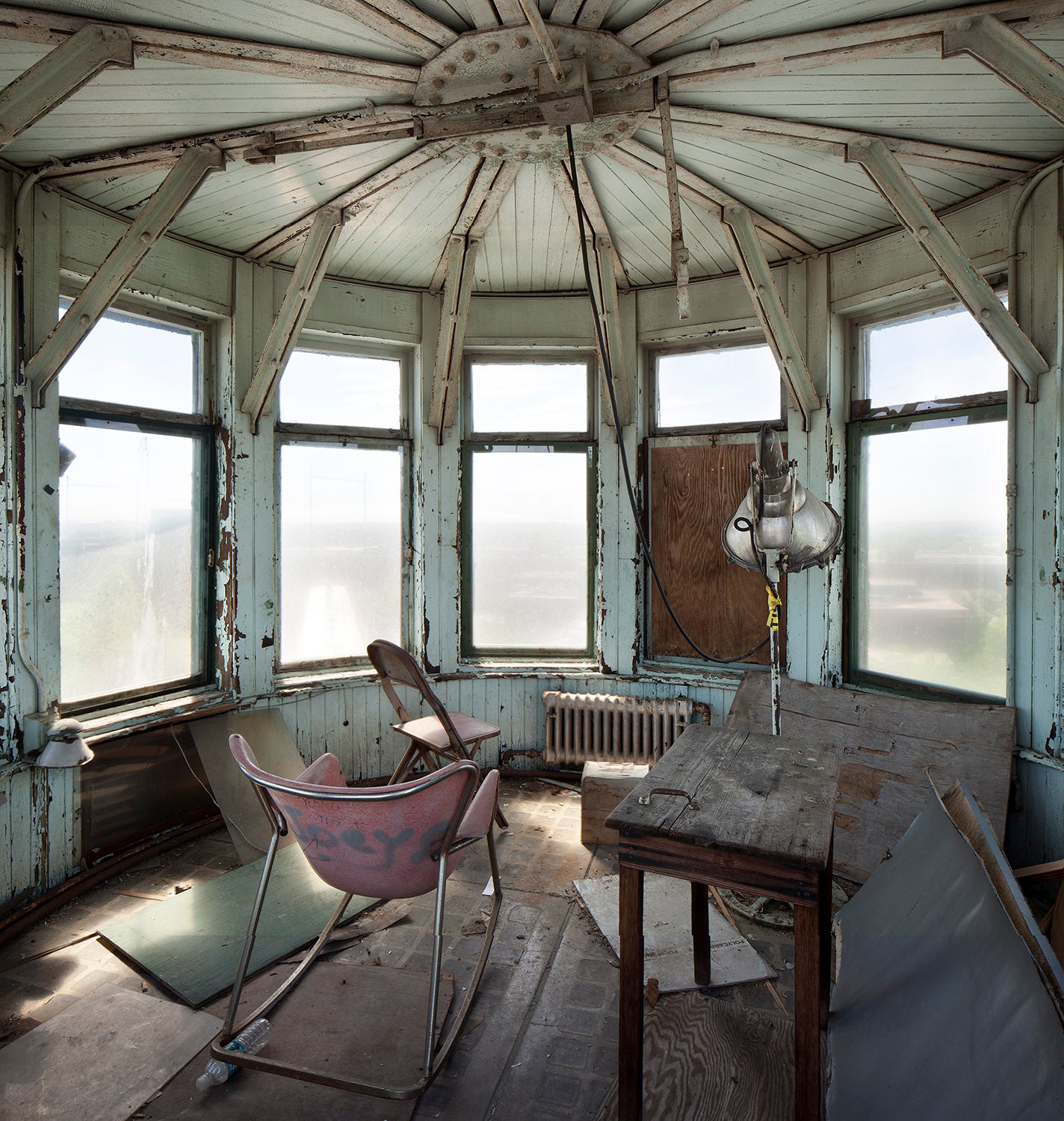Eyes on the Page: ‘Philadelphia: Finding the Hidden City,’ reviewed

Like the website and the festivals that supply the operative part of its title, Philadelphia: Finding the Hidden City is a love letter to the city’s past. To the extent it is more than an extended ode to the old, it is a celebration of the Philadelphia Register of Historic Places and an argument for historic preservation. But the authors, Nathaniel Popkin and Peter Woodall, know their audience: This is the choir they are preaching to, so the preservationist evangelism is kept to a minimum in favor of more loving sermons extolling the architectural holiness of some of the city’s spaces, including sacred ones like the Church of the Advocate.
The book’s text plays a supporting role to its star: Joseph E. B. Elliott’s photographs of Philadelphia places lost, hidden, and hiding-in-plain-sight. The artwork will delight any Philly lover and inspire plans to go explore these physical manifestations of the city’s often-forgotten history in person. And that is perhaps the central mission of Hidden City and this book: To look at present day Philadelphia and see its messy, glorious past.
The prose ambles along as if a charming pendant on a stroll through town, here noticing a faded photograph that inspires a winding exposition on the incidental preservationism of Father Divine, there pointing out an architectural curlicue belying a nondescript storefront’s original use as a theater or a five-and-dime. This is no orderly tour through the city’s architectural history, it’s a wandering tale of discovering the past as it peeks out from behind modernity’s façade. Philadelphia: Finding the Hidden City belongs on your coffee table, not your reference desk.
That is not to say those who read the book, rather than merely peruse its vivid photography, won’t learn anything. Popkin and Woodall did their homework and it shows in the form of pages packed with interesting tidbits about the city as it once was and as it now is, like tiny Camac Street’s rich collection of private clubs and Queen Village’s mishmash of rowhome synagogues.
Even though Philadelphia’s old moniker was Athens of America, it’s Paris that is the authors’ continental foil. The two cities were similar sized during critical periods of their development — Philadelphia’s City Hall was supposed to have the tallest tower in the world, the authors note, but before it could be finished, Gustave Eiffel’s tower rose above it — and how each treated the past is offered as a subtle contrast. “And opposite City Hall on the west side sat the largest railroad terminal in the world: the Broad Street Station of the Pennsylvania Railroad,” the authors write as an aside to a meditation on the Wanamaker Organ. Left unsaid: How the majestic Frank Furness-designed station was unceremoniously demolished to make way for Penn Center’s mid-rise boxes. In Paris, a Beaux-Arts train palace built a decade after Broad Street Station, Gare D’Orsay, survives today as the Musee D’Orsay, whose collection of post-impressionist works rivals the Barnes Foundation’s.
Perhaps befitting for an ode to Philadelphia’s past, Finding the Hidden City sometimes feels stuck in it. The authors repeatedly return to the city’s nadir in the mid-1990s, when Philadelphia served as the backdrop for the film Twelve Monkeys post-apocalyptic dystopia. Twenty years on, that Philadelphia feels a lifetime ago. The city has enjoyed a decade of population growth fueled by millennials and immigrants, resulting in a booming, vibrant downtown and an ever-expanding ring of rejuvenated neighborhoods.
The authors devote a subchapter to “Ruins as Raw Materials”, writing: “In present-day Philadelphia it is possible to inhabit industrial ruins — not just artists taking over lofts, as they have since the 1930s, or artisans turning an old dye works into a coffee roaster or distillery, but craftspeople carrying them forward as places of production, following their original purpose.” Here the authors are powerless against manufacturing’s romanticism and the moral comfort of an honest day’s labor. But even though some residents still make their living making physical things, they are becoming vanishingly rare. Including repair fields, manufacturing comprises less than six percent of the metro area’s jobs, and the total number of good producers declines year after year. While much of Philadelphia was built when the city was the Workshop of the World, its economic future lies in the ephemeral knowledge economy.
Philadelphia: Finding the Hidden City may be a paen to the city’s past, but it doesn’t silence the uglier notes in Philadelphia’s history, highlighting how virulent racism altered the city’s physical makeup by forcing African-Americans to build institutions in parallel to those they were barred from. Lamentations for lost architectural masterpieces regularly reappear in between the book’s gorgeous photo spreads of underground cisterns, overlooked buildings, and forgotten infrastructure.
With the holidays around the corner, it’s worth noting that Philadelphia: Finding the Hidden City would make a great gift for the guy or gal in your life who actually managed to read all 751 pages of Philadelphia: A 300-Year History or holds strong opinions on the legacy of Edmund Bacon. As with all other coffee table books, Philadelphia: Finding the Hidden City serves as a signalling device, demonstrating to guests the owner’s fascination with the city and the part of its past that usually sits just out of sight.
Philadelphia: Finding the Hidden City
By Joseph E. B. Elliot, Nathaniel Popkin, and Peter Woodall
(Temple University Press, 183 pages, $36.95)
WHYY is your source for fact-based, in-depth journalism and information. As a nonprofit organization, we rely on financial support from readers like you. Please give today.






